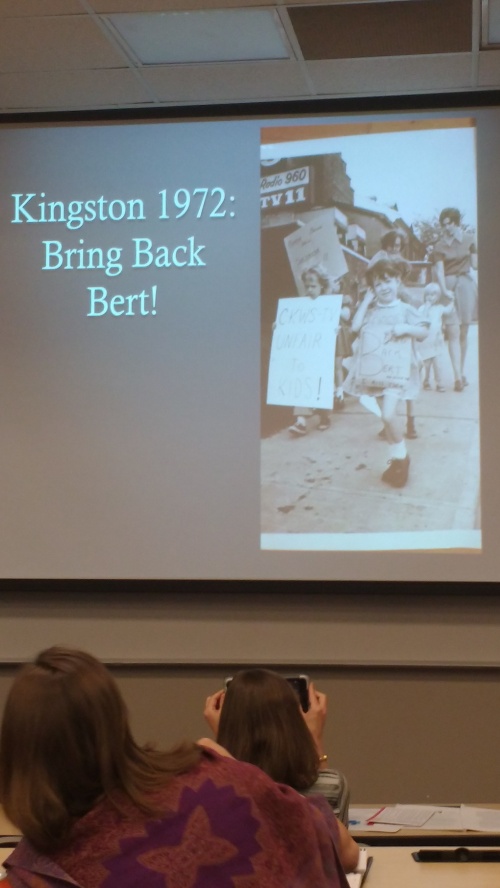“All historians are not public historians.”
Heritage Toronto’s Historical Plaques Program Coordinator Camille Bégin said this yesterday alongside Historica Canada’s Hayley Andrew, the Canadian Museum of History’s Jenny Ellison, and the Ontario Ministry of Indigenous Relations and Reconciliation’s Alison Norman during the “Doing it in Public: History Outside the Academy” roundtable.
I think the sentiment can go both ways. Wrapping up my first PhD year, I am around many students who, as historians, have little interest in engaging, discussing, and respecting the public audience. History, for them, does not mean interacting with contemporary publics online, in print, or within gallery spaces. It means talking to colleagues within their institution and publishing for those at other universities, keeping academic history within the walls of those who are understood as competent enough to “get” it.
Having worked at a variety of archives, libraries, and museums over the last few years, connecting and conversing with publics is, for me, what it is all about. I am constantly frustrated at the answers when I question what the point of doing history is if not for other people. With Ellison discussing how publics in the histories we study are respected in ways absent to how we sometimes deal with contemporary audiences, a push “to respect the public, not just educate the public” is therefore imperative. How are we supposed to be relevant historians if we refuse to do so?
Such discussions supplemented the collaborative “New Technologies in Historical Research” roundtable earlier that morning to insist that those doing history are sometimes not historians at all. Listening to Peter Baskerville, Dominique Clément, Ian Milligan, Reuben Rose-Redwood, Samantha Romano, and Sonja Aagesen, I was happy to hear about current interdisciplinary projects that greatly respected the skills and tools offered by people who may be geographers or computer scientists that are nevertheless doing history all the same. Working together within the academy alongside historians to build digital tools and data sets useful for the history that we do and the publics that we want to reach offers unheard of opportunity to work with the material at hand.
Approaching the next few years of dissertation work will, perhaps, be a solitary process for me if it is kept within the expected confines of academic practice. That there is some element of public engagement and collaboration within the academy beyond intense study, however, offers hope to the historian like me who wants their work to do something more than speak to itself.
I look forward to hearing how we continue to do so in Regina, Vancouver, and London.







